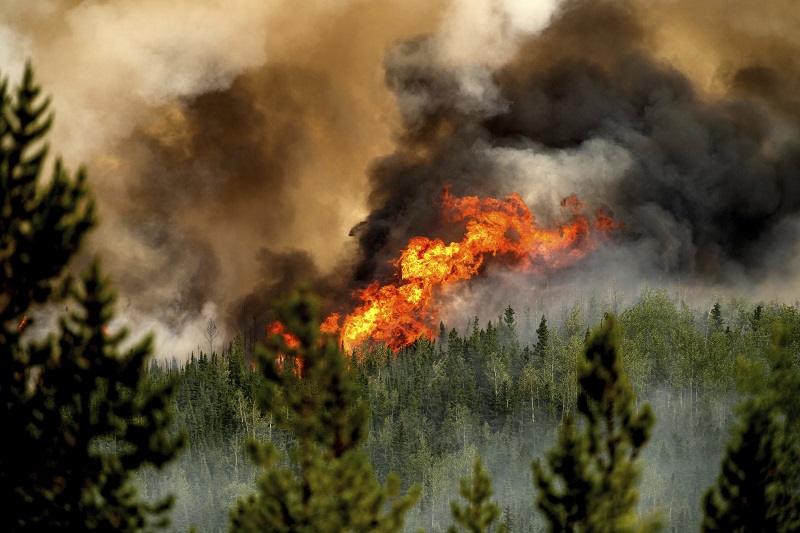How much insurers can expect to pay for Canadian wildfires

Canadian insurers could see between $700 million and $1.5 billion in insured losses from this summer’s wildfire season, DBRS Morningstar predicts in new commentary.
Despite the high loss figures, the claims incurred in 2023 Q3’s wildfire season will be manageable for insurers, DBRS writes.
However, wildfire season is not yet over, and some of the worst fires have happened in the past week.
“There is the potential for any of the fires to intensify and further pressure 2023 Q3 results, especially if the fires affect densely populated regions, economic hubs, or key infrastructure. Larger and more frequent weather-related losses will continue to pressure property insurance prices higher in the near term,” DBRS authors Nadja Dreff and Marcos Alvarez write.
A fire that started in Kelowna, B.C. last week has burnt an estimated 200 structures, including Lake Okanagan resort, and an Okanagan children’s summer camp, according to Canadian Press. Close to 30,000 Interior B.C. residents have had to evacuate, as the fires blaze in residential areas and are knocking out power.
Along with property damage claims, insurers can anticipate temporary accommodations (additional living expenses), property losses and smoke damage claims from the Kelowna wildfires, Catastrophe Indices and Quantification Inc. (CatIQ) said.
And in the hamlet of Enterprise, Northwest Territories, officials estimate 80% to 90% of the towns’ structures have been destroyed by last week’s blazes.
What’s more, these wildfires may spell reinsurance impacts for Canada.
Across the country, the area burnt by wildfires is more than double that of a typical year, burning through 14 million hectares of land. And when a natural disaster is exceptionally large or costly in scale, reinsurance tends to cover a majority of the claims.
“But, when there are numerous insured loss events, as is the case in 2023 with multiples fires burning across the country, reinsurance recoverable amounts tend to be much lower,” DBRS writes.
This is because the insurers is typically responsible for covering initial losses until reinsurance can be applied.
But as the fires continue to approach urban areas, requiring evacuations, DBRS notes insurers have been actively involved in helping clients pay out incoming claims.
“Despite the above-average wildfire season and other catastrophic events experienced in the first half of 2023, Canadian insurers underwriting profitability has held up well,” the authors write.
For example, four of Canada’s publicly traded P&C companies — Intact Financial Corporation, Fairfax Financial Holdings, Definity Financial Corporation and Trisura Group Ltd. — reported positive underwriting profits up until the end of 2023 Q2, and combined ratios that are relatively similar, or marginally higher, than 2022.
Over the last 20 years, there have been only six years when fire was primarily responsible for a catastrophic loss, DBRS notes. In those cases, the fires affected the western Canada provinces.
The Fort McMurray, Alta., fire cost the industry close to $4.4 billion — accounting for 74% of total insured loss for 2016, per DBRS. It is the single largest loss catastrophe to ever hit Canada.
The most recent fire-related catastrophic loss was in 2021, when a fire burned the town of Lytton, B.C., leading to an estimated $102 million in damages.
Wildfires don’t typically account for a large portion of Canada’s catastrophic losses, DBRS adds. But they have the potential to lead to high claims numbers related to partial and total loss of property and equipment, smoke-related damage and other clean-up, cost of living expenses following mandated evacuations, and potential for loss of income for insured businesses in the affected area.
Flames from the Donnie Creek wildfire burn along a ridge top north of Fort St. John, British Columbia, Canada, Sunday, July 2, 2023. (AP Photo/Noah Berger)







